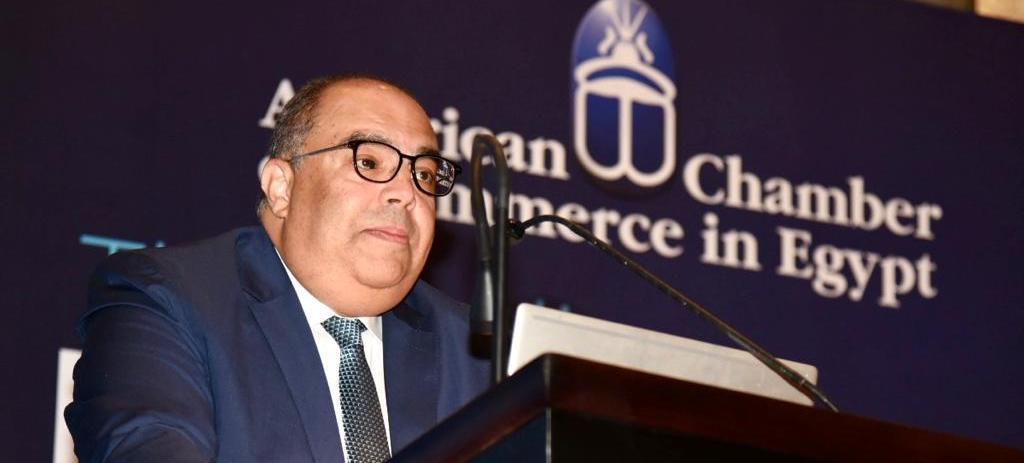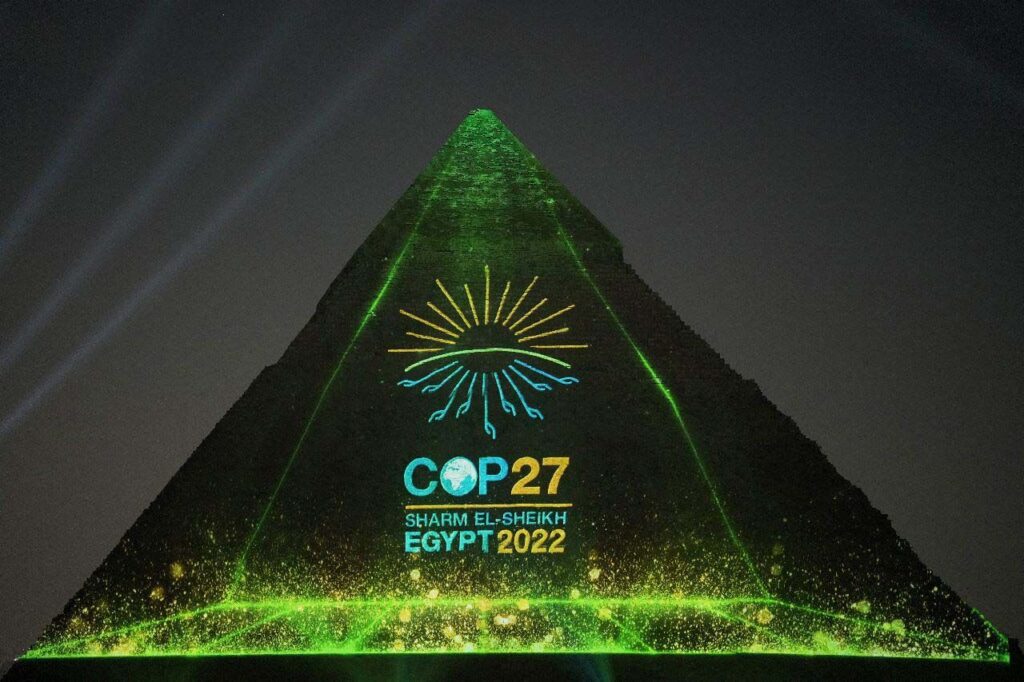At the conclusion of last year’s U.N. Conference of the Parties (COP26), Alok Sharma, then COP president, praised the agreements reached. However, he stressed the next COP (COP27) must build on that work. “The Glasgow Climate Pact … emphasizes the need to act. It sets a clear way forward on the Global Goal on Adaptation and urges developed countries to at least double their collective climate finance for adaptation by 2025.”
During that closing speech, Sharma stressed that a “gulf remains between short-term targets and what is needed” to limit global warming to no more than 1.5 degrees Celsius above pre-industrial levels to avoid extreme climate change events.” The Glasgow Climate Pact would “keep 1.5 degrees within reach … But the need for continual action and implementation, to match ambition must continue … It will only survive if we keep our promises if we translate commitments into rapid action.”
At COP27 in Egypt, the goal was clear: agree on how nations with limited resources would receive support from wealthy countries to finance climate action projects.
Reaching satisfactory outcomes and agreements for all parties on all discussed issues was always going to be difficult. Mexico’s chief climate negotiator Camila Zepeda summed up COP27: “You take a win when you can.”
Going into COP27
Janet Ranganathan, managing director of the World Resources Institute, told a WEF panel discussion at COP27 there were “critical tasks for negotiators” to discuss. She stressed the importance of ensuring that wealthy countries meet their 2016 pledge to pay low and middle-income nations $100 billion annually to support their climate action projects.
She also emphasized the need to strengthen and align voluntary commitments via the Global Methane Pledge and Zero-Emission Vehicle programs, as well as anti-deforestation initiatives.

Biggest win?
On the last day of COP27, negotiators agreed to create a fund to compensate poor and developing countries for losses and damage due to extreme weather events. Countries the U.N. classifies as most vulnerable to climate change would be eligible for that support. Wealthy nations would deposit a predetermined amount into that fund annually.
The fund was hailed as a “historic moment.” “We have determined a way forward on a decades-long conversation on funding for loss and damage — deliberating over how we address the impacts on communities whose lives and livelihoods have been ruined by the very worst impacts of climate change,” said Simon Stiell, U.N. climate change executive secretary. Parties also agreed to create a transitional committee to oversee the fund, with the first meeting scheduled for March.
Matt McGrath, the BBC’s environment correspondent, said the fund could be “the biggest win on climate since Paris” in 2015 when the U.N. announced the 17 Sustainable Development Goals. “Money has long been available to cut carbon or help countries adapt to rising temperatures,” he said, “but there was nothing for those who had lost everything.”
However, funding won’t be available anytime soon. “The COP27 decision on loss and damage won’t fix that immediately,” said McGrath. “The fund comes with many unknowns. What will be the criteria to trigger a payout? Where will the money come from and will it be enough?”
Valerie Volcovici, Reuters’ COP27 correspondent, believes “it will likely take several years before the fund exists. The agreement [set] out only a roadmap for resolving lingering questions including who would oversee the fund, how the money would be dispersed — and to whom.”
Other climate developments
The loss and damage fund wasn’t the only thing negotiators agreed on. “COP27 saw significant progress on adaptation,” said Velcovici. That includes how to advance the Global Goal of Adaptation agenda. The UN announced it in 2015 with a mandate to “track [and] assess countries’ progress on adaptation actions and for catalyzing funds.”
Another win was for the Adaptation Fund, created in 2001 to “finance concrete projects and programs in developing countries,” said the United Nations Framework Convention on Climate Change (UNFCCC). Volcovici reported it received $230 million in funding at COP27.
There also were agreements on the national and African levels. The Egypt Nexus of Water, Food and Energy, a $14.7 billion program of nine projects in cooperation with the International Fund for Agricultural Development (IFAD), was launched at COP27. The funding will mainly come from the African Development Bank (water projects), IFAD (food and agriculture projects) and European Bank for Reconstruction and Development (energy projects).
The EBRD announced it would give Egypt an $80 million loan to operate its green ammonia plant, jointly owned by Fertiglobe, Scatec, Orascom Construction and the Sovereign Fund of Egypt. Another deal under the Green Economy Financing Facility with the EU will lend QNB Al Ahli $20 million to invest in youth-led green projects.
Egypt will receive $350 million in investment from the World Bank’s Climate Investment Fund to finance “sustainable agriculture” projects.
Lastly, Egypt announced it would launch a $1 billion fund to finance “low carbon projects that issue carbon credits,” according to Enterprise. The Egyptian stock market announced it would have a “voluntary carbon market” to trade carbon credits. It will be the first exchange in Africa to give investors that option. EGX boss Ramy El Dokany told the media it is expected to start in mid-2023.
Egypt could benefit from foreign government pledges to finance green projects in the Middle East and Africa. The Netherlands said it would offer up to 1.8 billion euros ($1.9 billion) over the next three years to emerging markets to fund climate projects and contribute 100 million euros ($1,04 million) to the Africa Adaptation Acceleration program.
Holland will join France, Germany, and Denmark to provide 1 billion euros ($1.04 billion) for climate adaptation in Africa, Reuters reported. EU climate policy chief Frans Timmermans said the amount was a “starting point,” and more EU countries might join.
The United States, meanwhile, said it plans to double its contribution to the Adaptation Fund to $100 million and pledged to give African nations $150 million more to finance eco-friendly projects. The U.K. promised to invest 100 million pounds sterling in “developing countries” to finance adaptation projects.
Other pledges came from regional private-sector players to finance bankable eco-friendly projects in emerging markets. The U.A.E.’s Mashreq Bank posted on its Facebook page during COP27 a plan to invest $30 billion in sustainable projects by 2030. The Arab Coordination Group, an alliance of regional development funds and the OPEC Fund for International Development, announced they would allocate $24 billion to climate finance by 2030.
Meanwhile, the African Union, African Development Bank Group, and Africa50, a coalition of nations, launched the Alliance for Green Infrastructure, committing $500 million for projects across the continent. The new alliance plans to raise an additional $10 billion for similar projects.

Fossil fuels continue
At last year’s COP, the concluding statement stressed the need to “phase down” the use of coal. “It marked the first time a resolution on fossil fuels had been included in the final text,” reported The Guardian during COP27.
This year, media outlets reported several countries, including India, advocated the phrase “phase down all fossil fuels” in COP27’s final text. That didn’t happen.
Some criticized the omission, saying the final text failed to put more pressure on polluters to reduce harmful emissions. “The COP27 … text largely repeats wording from Glasgow,” reported Reuters. “[It] called up parties to accelerate ‘efforts toward the phasedown of unabated coal power and phase-out of inefficient fossil fuel subsidies.'”
This year’s text also didn’t mention reaching peak emissions by 2025 or develop a follow-up mechanism on efforts to “phase down” coal use, and there was no “clear commitment to phase out all fossil fuels,” said COP26’s President Sharma at this year’s event.
Private sector speaks
On the other hand, top executives attending COP27 said they are accelerating climate action as it is “good for business.” “Companies are not waiting for legislation and pledges, but have actually started, driven by their own ethical and moral motivation,” said CEO Jesper Bordin of Ingka Group, which owns IKEA.
Bordin of IKEA stressed during COP27 that while the glass was “very” half empty, it also was “very” half full. At the WEF’s session at COP27, he said, “the world is not on track” to meet the climate challenge. Yet, “there [is] so much activity. Collaboration with NGOs, companies, corporate leaders and youth movements.”
Bordin said that from the perspective of companies, “sustainability and climate [are] not about sacrifices and are less about upfront investments. It is really about being a winner in the economy, where the only way to be cost smart is to be resource smart and climate smart.”
Companies that can develop sustainable and eco-friendly business models, but postpone them, put themselves at risk. Anish Shah, managing director and CEO of Mahindra Group, an Indian conglomerate, said neglecting climate action can become an existential issue for business. Extreme weather events can halt production for weeks or months, block transportation routes and even destroy a company’s premises. “Mitigating climate’s systemic risk [protects] a business and makes it sustainable.”
Meanwhile, awareness of climate issues among customers and potential customers is rising fast, driven by climate disasters worldwide. “We developed a net-zero residential community. It sold out in a day,” Shah told the WEF panel. “We had not expected [that] and are actively looking into launching only net-zero communities.”
Other companies are not waiting for governments and policymakers to agree on climate action. During COP27, the World Business Council for Sustainable Development announced results of the Partnership for Carbon Transparency (PACT) program. It highlighted the outcomes of members’ “pilot projects” to decarbonize their supply chains (Scope 3 emissions). PACT members include Tetra Pak, Procter & Gamble, Shell, BASF, and SAP, among others.
Reforming finance
Another central point of discussion was reforming financing by multilateral development banks (MDBs) and international financing institutions (IFIs). The aim is to “align their spending with climate goals,” said Laurence Tubiana, CEO of the European Climate Foundation.
Such reforms have been discussed for years. At COP27, the situation appeared more dire in developing countries suffering from rising inflation, devaluation of currencies, and more debt. Meanwhile, developed nations are failing to meet their pledge to provide $100 billion in financing annually. “The moment is right,” Tubiana told Bloomberg during COP27. “Climate impacts are beginning to be understood as a macroeconomic risk.”
At the top of the list of reforms is allowing the World Bank Group’s Multilateral Investment Guarantee Agency to “provide more support to de-risk investments in developing countries through insurance against political risk and currency fluctuations,” noted Tubiana.
Mahmoud Mohieldin, the U.N.’s high-level climate champion, told the media the World Bank Group’s International Development Association (IDA) mandate must expand to include middle-income nations. The IDA currently gives low-interest loans and grants to the U.N.’s low-income countries. He said an expansion would “speed up financial flows toward … energy transition and adapting to a warmer planet.” If that happens, it would open another financing channel for Egypt.
McGrath of the BBC argues that based on the COP27’s final text, there is a “50-50 chance over the next five years that we’ll go over the important [1.5 degrees Celsius] marker … We’re likely to pass it permanently by 2031.” If that prediction holds, all countries must build sufficient resilience to counter a catalog of unpredictable extreme weather events that will likely become a fact of life.







